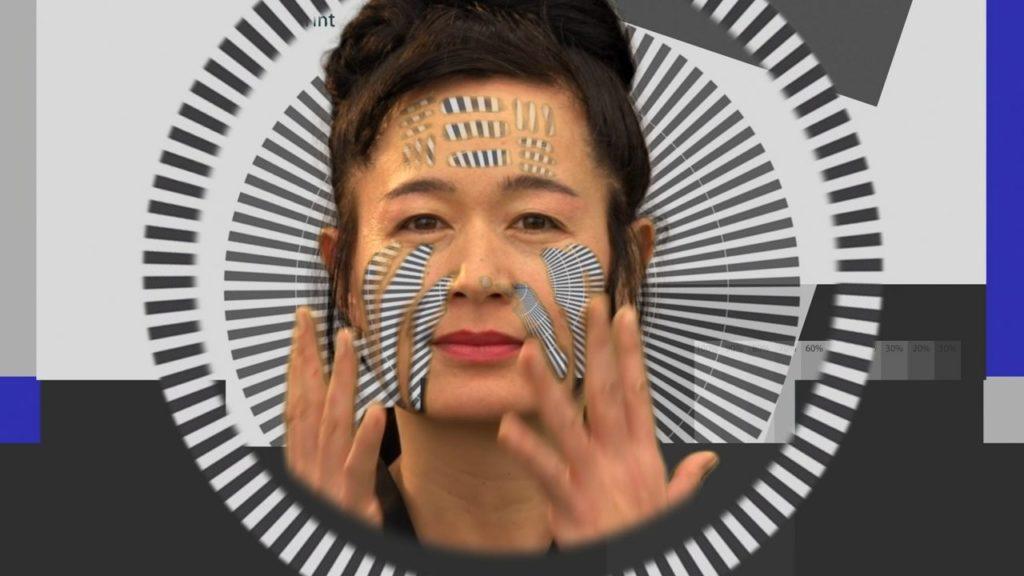
Known for pushing the boundaries of artistic expression, the Hirshhorn Museum and Sculpture Garden’s latest exhibit, “The Message: New Media Works,” challenges its viewers to re-examine their human experiences. Comprised of five unique film installations, each of which portrays a different aspect of modern life, the exhibit speaks to the challenges that arise with new forms of communication and the complexities of modern life.
“The Message” is the first project at the Hirshhorn for the hired Mark Beasley, the museum’s first curator of media and performance art. In the future, Beasley hopes to bring more performance-based works to the Hirshhorn, which currently houses several exhibits that play with concepts of space and structure; he also plans to draw inspiration specifically from his musical roots. The exhibit marks a new direction for institutionalized art but is an exciting possibility for future Hirshhorn installations.
Walking into “The Message,” the first installation to view is “Grosse Fatigue” by Camille Henrot. Intended as a brief history of the universe, the piece uses footage from her 2013 fellowship at the Smithsonian Institution. It also features poetry written by Henrot and American poet Jacob Bromberg. A groovy beat by disc jockey Joakim plays low enough in the background that the poetry, read by artist Akwetey Orraca-Tetteh, can still be heard.
The video also employs images of ordinary objects and moving hands, opened as computer windows over one another, to show the complicated overlapping history of our world. The clips vary in subject matter and are sometimes disturbing, sometimes provocative and sometimes calming, yet there is a common thread of liveliness that runs through them all, creating a cohesive but eerie story.
Of the five pieces, “How Not to be Seen: A F—ing Didactic Educational.MOV File,” by Hito Steyerl is the most outlandish. The film depicts a dystopian world controlled by technology, while a monotone voice instructs viewers on how to disappear in such a society.
Droll, funny and at moments just plain weird, Steyerl’s video captures the fear and confusion that such a society can elicit. Looking past the strange imagery, the underlying message of “How Not to be Seen” is clear: There is nowhere to hide in the age of information.
“HALKA/HAITI 18°48’05″N 72°23’01″W,” by C.T. Jasper and Joanna Malinowska features a Polish opera being performed on a Haitian street. The depicted Haitian community has Polish heritage, but little else is shared between the classic opera setting and the setting of this film. As motorcycles drive past and goats mingle in the streets, the opera that the performers sing is just as captivating, if not more so, than a traditional opera hall performance.
The camera in this film does not move, allowing the raw emotions of the scene to take center stage. The organic nature of the filmed audience is equally as important as the opera itself, as it brings a level of humanity to a typically elite art form.
Arthur Jafa’s masterful film, “Love is the Message: The Message is Death,” is a montage of black culture throughout history. Set to the song “Ultralight Beam” by Kanye West, the film appears more like a music video than a typical art exhibit. It powerfully exposes the violence and triumphs that black people have experienced since coming to the United States, while celebrating the mundane moments of living in the face of constant oppression.
In a moment of silence, a girl asks, “What would America be like if we loved black people as much as we love black culture?”
Her question is followed by quick cuts of iconic moments, simple home videos and police footage. With his film, Jafa — who has become a modern master in filmmaking because of his work with musical legends such as Beyoncé and Jay-Z — highlights the experiences of both black people and their culture and allows viewers to feel the joy and trauma of the black narrative.
The final piece in the exhibit is more lighthearted but nonetheless meaningful. “My Best Thing” is a transcript of creator Frances Stark’s experience in online sex chatrooms. An automatic voice reads out her words as she struggles to define intimacy and closeness and to understand how her struggles connect with her art.
Autobiographical works are not unfamiliar to Stark, who has a history of writing highly personal prose and poetry. The lack of intimacy in “My Best Thing,” with its frozen cartoon characters speaking in monotone voices, is fascinatingly applicable to the disconnect between partners in modern relationships.
On first glance, the history of the universe, the age of information, cross-cultural interaction, black identity and distanced intimacy seem to have little in common. Yet all these topics are reflections on our lives, told through different lenses to appeal to the diverse group of individuals who make up modern society.
The theme of communication is fitting for this exhibit. There is no one way to experience the world, just as there is no one way to experience these films. Whether through sermon, music video or online sex chatroom, “The Message” highlights the pluralities and contradictions inherent in humanity and the powerful art that comes from them.
“The Message: New Media Works” is at the Hirshhorn Museum and Sculpture Garden until April 22, 2018.



















